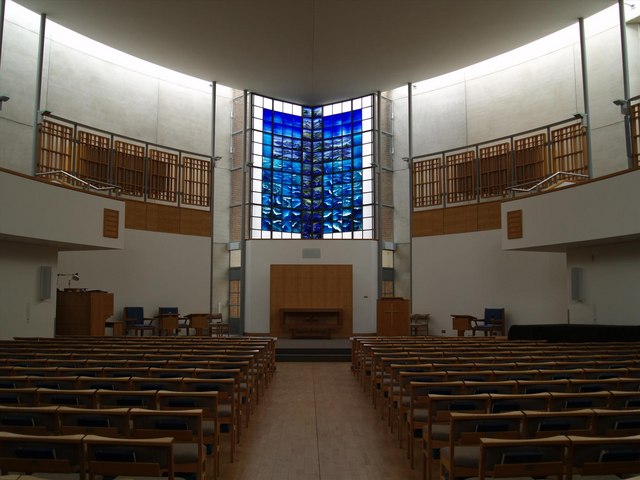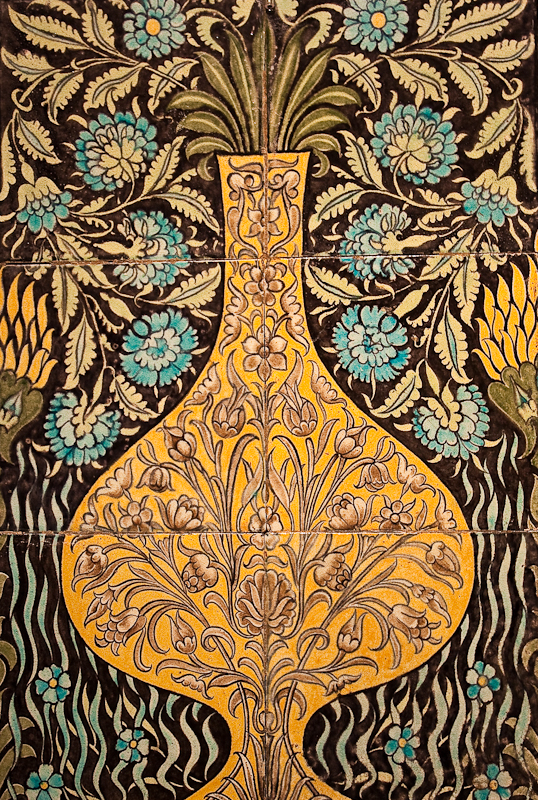|
Bowden House, Berkshire
Bowden House, previously called both "Bowden Green" and "Port Jackson", is an English country house. It is a historic Grade II* listed building. The house is located southwest of Pangbourne, Berkshire. History The house was originally called "Bowden Green" and was built between 1897 and 1898 by architect Arnold Bidlake Mitchell (1863–1944) for the engineer of the Forth Bridge, Benjamin Baker (engineer), Sir Benjamin Baker. When the unmarried Baker died in 1907, the property went to his niece, Mona Spagnoletti, née Kemp, and her husband James Spagnoletti, the son of inventor Charles Spagnoletti, who were already living with Baker. An addition was made to the west end of the house in around 1910, containing a billiards room. At a later point, Pangbourne College acquired the property and used it as a junior school and dormitory, called "Port Jackson". In 2003 the school built a new building on their main campus to house Port Jackson and offered the house for sale. Architect ... [...More Info...] [...Related Items...] OR: [Wikipedia] [Google] [Baidu] |
English Country House
image:Blenheim - Blenheim Palace - 20210417125239.jpg, 300px, Blenheim Palace - Oxfordshire An English country house is a large house or mansion in the English countryside. Such houses were often owned by individuals who also owned a Townhouse (Great Britain), town house. This allowed them to spend time in the country and in the city—hence, for these people, the term distinguished between town and country. However, the term also encompasses houses that were, and often still are, the full-time residence for the landed gentry who dominated rural Britain until the Reform Act 1832. Frequently, the formal business of the Historic counties of England, counties was transacted in these country houses, having functional antecedents in manor houses. With large numbers of indoor and outdoor staff, country houses were important as places of employment for many rural communities. In turn, until the Great Depression of British Agriculture, agricultural depressions of the 1870s, the est ... [...More Info...] [...Related Items...] OR: [Wikipedia] [Google] [Baidu] |
Pangbourne College
Pangbourne College is a mixed-sex education, coeducational Public school (UK), public school (private boarding school, boarding and day school, day school), for pupils aged 13-18 years, in Pangbourne, Berkshire, England. It is set in 230 acres, on a hill south-west of the village, in an Area of Outstanding Natural Beauty. The college was founded by Sir Thomas Lane Devitt Bt. in 1917 as The Nautical College, Pangbourne with the purpose of training boys to become Merchant Navy officers. It became "Pangbourne College" in 1969 and while conforming to the general lines of a British independent boarding school, retains a distinctly nautical flavour; the pupils wear naval uniform. History The college was founded by Devitt baronets, Sir Thomas Lane Devitt, 1st Baronet, in 1917 as "The Nautical College, Pangbourne", on the site originally occupied by Clayesmore School, now located in Dorset. The Nautical College's purpose was to prepare boys to become officers in the British Merchant N ... [...More Info...] [...Related Items...] OR: [Wikipedia] [Google] [Baidu] |
Country Houses In Berkshire
A country is a distinct part of the world, such as a state, nation, or other political entity. When referring to a specific polity, the term "country" may refer to a sovereign state, state with limited recognition, constituent country, or dependent territory. Most sovereign states, but not all countries, are members of the United Nations. There is no universal agreement on the number of "countries" in the world, since several states have disputed sovereignty status or limited recognition, and a number of non-sovereign entities are commonly considered countries. The definition and usage of the word "country" are flexible and have changed over time. ''The Economist'' wrote in 2010 that "any attempt to find a clear definition of a country soon runs into a thicket of exceptions and anomalies." Areas much smaller than a political entity may be referred to as a "country", such as the West Country in England, "big sky country" (used in various contexts of the American West), "coa ... [...More Info...] [...Related Items...] OR: [Wikipedia] [Google] [Baidu] |
Grade II* Listed Houses
Grade most commonly refers to: * Grading in education, a measurement of a student's performance by educational assessment (e.g. A, pass, etc.) * A designation for students, classes and curricula indicating the number of the year a student has reached in a given educational stage (e.g. first grade, second grade, K–12, etc.) * Grade (slope), the steepness of a slope * Graded voting Grade or grading may also refer to: Music * Grade (music), a formally assessed level of profiency in a musical instrument * Grade (band), punk rock band * Grades (producer), British electronic dance music producer and DJ Science and technology Biology and medicine * Grading (tumors), a measure of the aggressiveness of a tumor in medicine * The Grading of Recommendations Assessment, Development and Evaluation (GRADE) approach * Evolutionary grade, a paraphyletic group of organisms Geology * Graded bedding, a description of the variation in grain size through a bed in a sedimentary rock * Metamorph ... [...More Info...] [...Related Items...] OR: [Wikipedia] [Google] [Baidu] |
Grade II* Listed Buildings In Berkshire
The English county of Berkshire has 252 Grade II* listed buildings. Buildings Bracknell Forest Reading Slough West Berkshire Windsor and Maidenhead Wokingham See also * Grade I listed buildings in Berkshire There are approximately 372,905 listed buildings in England and 2.5% of these are Grade I. This page is a list of these buildings in the county of Berkshire, ordered by building name within place name within district. Bracknell Forest R ... Notes External links National Heritage List for England {{Berkshire Lists of listed buildings in Berkshire ... [...More Info...] [...Related Items...] OR: [Wikipedia] [Google] [Baidu] |
Grade II
In the United Kingdom, a listed building is a structure of particular architectural or historic interest deserving of special protection. Such buildings are placed on one of the four statutory lists maintained by Historic England in England, Historic Environment Scotland in Scotland, in Wales, and the Historic Environment Division of the Department for Communities in Northern Ireland. The classification schemes differ between England and Wales, Scotland, and Northern Ireland (see sections below). The term has also been used in the Republic of Ireland, where buildings are protected under the Planning and Development Act 2000, although the statutory term in Ireland is " protected structure". A listed building may not be demolished, extended, or altered without permission from the local planning authority, which typically consults the relevant central government agency. In England and Wales, a national amenity society must be notified of any work to be done on a listed building w ... [...More Info...] [...Related Items...] OR: [Wikipedia] [Google] [Baidu] |
William De Morgan
William Frend De Morgan (16 November 1839 – 15 January 1917) was an English potter, tile designer and novelist. A lifelong friend of William Morris, he designed tiles, stained glass and furniture for Morris & Co. from 1863 to 1872. His tiles often recall medieval or Islamic design patterns. He applied innovative glazes and firing techniques. Galleons and fish were common motifs, as were "fantastical" birds and animals. Many of De Morgan's tiles were designed to create intricate patterns when several were laid together. Life and work Born in Gower Street, London, the son of the distinguished mathematician Augustus De Morgan and his highly educated wife Sophia Elizabeth Frend, De Morgan was supported in his desire to become an artist. At the age of twenty, he entered the Royal Academy schools, but he was swiftly disillusioned with the establishment. Then he met Morris and through him the Pre-Raphaelite circle. Soon De Morgan began experimenting with stained glass, ventured ... [...More Info...] [...Related Items...] OR: [Wikipedia] [Google] [Baidu] |
Hamstone
Hamstone is a honey-coloured building stone from Ham Hill, Somerset, England. It is a well-cemented medium to coarse grained limestone characterised by marked bedding planes of clay inclusions and less well-cemented material which weather differentially to give exposed blocks a characteristic furrowed appearance. In origin, Hamstone is a Jurassic limestone from the Toarcian, or Upper Lias, stage. History In the 19th century there were 24 small quarries operating on Ham Hill employing some 200 men. In later Victorian times industrial quarrying expanded significantly, with upwards of 200 small family-run quarries and masonry businesses operating on site. Modern quarrying Today hamstone is quarried in only two areas of Ham Hill. The North quarry, run by Ham & Doulting Stone, extracts stone from just beneath the surface and is the longest running hamstone quarry in existence. The Norton or South quarry, run by Harvey Stone, extracts its stone from some 20–30 metres below t ... [...More Info...] [...Related Items...] OR: [Wikipedia] [Google] [Baidu] |
Junior School
A junior school is a type of school which provides primary education to children, often in the age range from 8 and 13, following attendance at an infant school, which covers the age range 5–7. Since both infant and junior schools provide primary education, pupils are commonly placed in a unified building – a primary school. Australia In Australia, a junior school is usually a part of a private school that educates children between the ages of 2 and 5. In South Australia a junior primary school, it is where a child will begin their education, usually in or before the year level preceding Year 1. Depending on the school, a child will move to the main primary school between the ages of 3 in 8 In most primary schools, the junior primary is located within the same buildings and grounds as the primary school, although some junior schools are located on an adjacent or separate site. Canada In Canada, mostly in Toronto, the term junior school is used by the former Etobicoke ... [...More Info...] [...Related Items...] OR: [Wikipedia] [Google] [Baidu] |
Charles Spagnoletti
Charles Ernest Spagnoletti MInstCE, MIEE (12 July 1832 – 28 June 1915) was an electrical inventor and the first telegraph superintendent of the Great Western Railway (GWR). He also advised various railway companies on the use of electricity, signalling, and telegraphy. Early life Charles Ernest Paolo della Diana Spagnoletti was born in Brompton, London on 12 July 1832. He was the eldest child of Ernesto and Charlotte (née Stohwasser) Spagnoletti. He was educated at Blemmell House School, Brompton. Ernesto Spagnoletti was descended from the noble Sardinian della Diana family. His own father, Paolo, had been a popular musician in London and had been given the inaccurate nickname "Spagnoletto" - the "little Spaniard" - by his admirers. Two generations later, Charles Ernest was given the surname Diana-Spagnoletti. Career At the age of fourteen, Spagnoletti started work at the National Debt Office. He soon started studying with Alexander Bain, inventor and engineer, and wor ... [...More Info...] [...Related Items...] OR: [Wikipedia] [Google] [Baidu] |
Pangbourne
Pangbourne is a village and civil parish on the River Thames in the West Berkshire unitary area of the county of Berkshire, England. Pangbourne has shops, churches, schools and a village hall. Outside its nucleated village, grouped developed area is an independent school, Pangbourne College. Geography Pangbourne is situated on the A329 road west of Reading, Berkshire, Reading, the nearest town, and south east of Oxford. It is across the river from the Oxfordshire village of Whitchurch-on-Thames. The two villages are connected by Whitchurch Bridge and by the traversable weir of Whitchurch Lock.Ordnance Survey (2006). ''OS Explorer Map 159 – Reading''. . The River Pang flows through the centre of Pangbourne village before joining the Thames between Whitchurch Lock and Whitchurch bridge. Most of the developed area is just above the current flood plain of the River Thames which benefits from hay meadows traditionally used as flood meadows to either side of Pangbourne. Fewer than ... [...More Info...] [...Related Items...] OR: [Wikipedia] [Google] [Baidu] |



